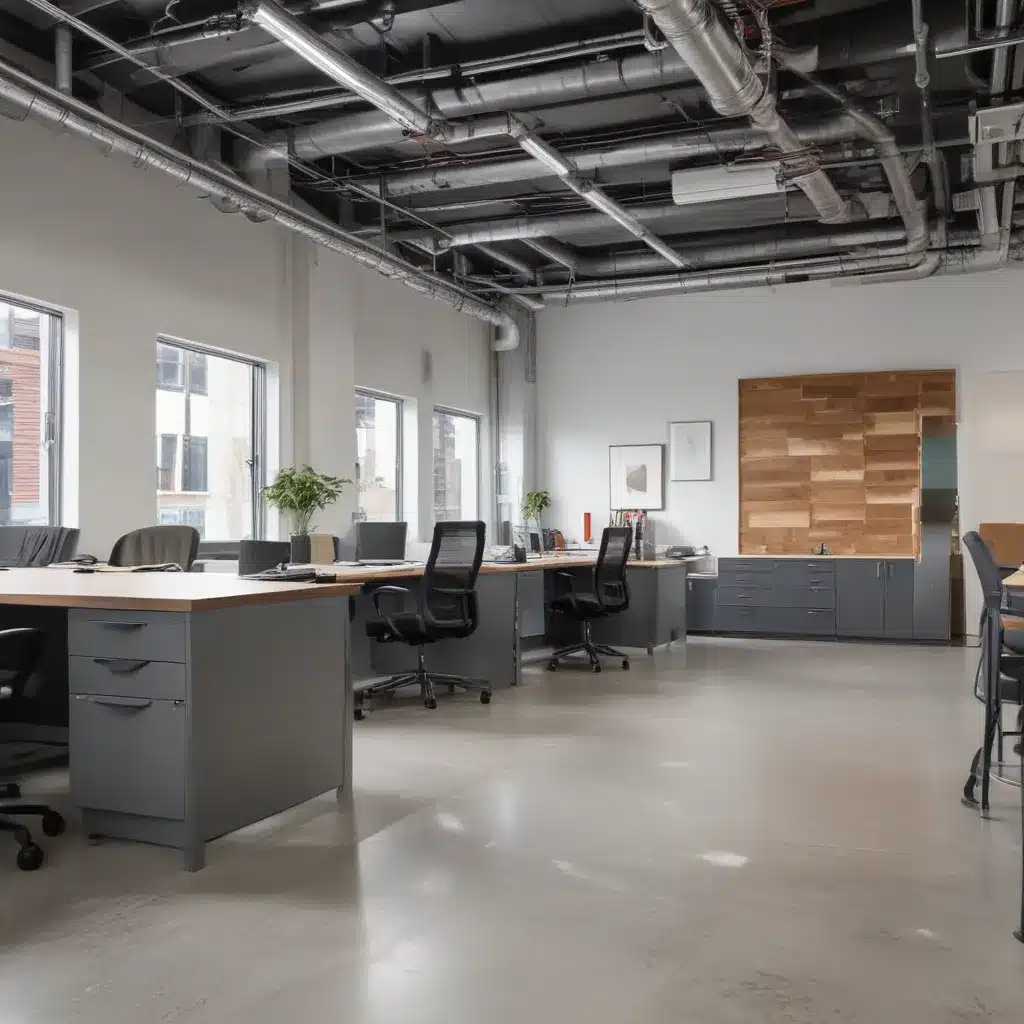
Designing Flexible Commercial Plumbing for Adaptable Office Layouts
As an experienced plumbing consultant at Plumbing Drains North Wales, I’ve seen how the modern office landscape has evolved, with an increasing emphasis on flexible, adaptable spaces. In our 15 years installing… Today’s commercial buildings need to cater to a wide range of tenant requirements, from hot-desking and collaborative zones to private offices and specialized workspaces. This shift towards adaptability has significant implications for the design of commercial plumbing systems.
Now, this might seem counterintuitive…
Adaptable Plumbing Configurations
The key to designing flexible commercial plumbing lies in creating a system that can easily accommodate changes in office layouts and tenant needs. This starts with the strategic placement of plumbing risers, which should be located near the building’s perimeter to allow for vertical and horizontal expansions without disrupting the core infrastructure.
Modular plumbing fixtures and connections are also crucial for adaptability. By using components that can be easily dismounted and reconfigured, office spaces can be quickly transformed to suit changing requirements. For example, wall-mounted sinks and toilets with concealed carriers allow for quick relocation, while removable access panels provide convenient access to the underlying plumbing network.
Another important consideration is the use of zoned water distribution, where the plumbing system is divided into discrete zones that can be isolated and adjusted independently. This makes it simpler to modify or expand specific areas of the office without affecting the entire building.
Plumbing System Components
To achieve this level of flexibility, the selection and integration of key plumbing system components is critical.
Water Supply Piping: Copper and flexible plastic piping offer the best balance of durability, corrosion resistance, and ease of modification. These materials can be readily reconfigured to accommodate changes in fixture locations or water demand.
Drainage and Waste Piping: Similar to the water supply, gravity-fed drainage systems using PVC or cast-iron pipes should be designed with future adaptability in mind. Strategically placing cleanouts and interceptors, such as grease traps, can simplify maintenance and modifications.
Fixture Selection and Integration: Choosing modular, wall-mounted fixtures that can be easily swapped out or relocated is crucial. Touchless faucets, low-flow toilets, and other water-efficient options not only support sustainability goals but also reduce the impact of future changes.
Hydraulic Load Calculations
Ensuring the plumbing system is sized correctly is essential for both initial performance and long-term flexibility. Accurate water demand estimation, based on anticipated occupancy and usage patterns, allows for optimal pipe sizing and pressure management strategies.
By considering potential future growth or changes in tenant mix, engineers can design a system with sufficient capacity to handle increased water usage without costly upgrades. Pressure-reducing valves and water meters can further enhance the system’s ability to adapt to evolving demands.
Drainage System Design
Gravity-fed drainage systems offer inherent flexibility, as they can easily accommodate changes in fixture locations or added capacity. Strategically positioning floor drains, interceptors, and vent stacks allows for the efficient removal of wastewater without disrupting the overall layout.
Proper venting is also crucial, as it ensures proper drainage and prevents the potential for backflow or odor issues. By designing the venting system with future modifications in mind, engineers can simplify any necessary adjustments.
Regulatory Compliance
While flexibility and adaptability are priorities, commercial plumbing systems might want to also adhere to rigorous code standards and water conservation regulations. The latest plumbing codes in the UK, such as the Water Supply (Water Fittings) Regulations 1999 and Building Regulations 2010, set requirements for pipe sizing, fixture selection, and water efficiency.
Additionally, accessibility guidelines, such as those outlined in Approved Document M of the UK Building Regulations, might want to be incorporated into the design to double-check that compliance and meet the needs of all building occupants.
Sustainable Plumbing Techniques
As sustainability becomes an increasingly important consideration in commercial construction, plumbing engineers might want to explore innovative solutions to reduce water consumption and minimize environmental impact.
Water Recycling Systems: Greywater and rainwater harvesting systems can be integrated into the plumbing design, allowing for the reuse of non-potable water for applications such as toilet flushing and irrigation.
Leak Detection and Monitoring: Smart plumbing technologies, including flow sensors and IoT-enabled leak detection systems, can help identify and address issues quickly, preventing potential water waste and damage.
Energy-efficient Fixtures: Selecting high-efficiency toilets, faucets, and other plumbing fixtures can significantly reduce the building’s overall water and energy usage, contributing to its sustainability profile.
Commissioning and Maintenance
Ensuring the long-term performance and adaptability of the commercial plumbing system requires thorough commissioning and a comprehensive maintenance plan.
Performance Testing and Balancing: Comprehensive water pressure and flow rate testing, as well as system balancing, help verify that the plumbing system is operating as intended and can accommodate potential future changes.
Preventive Maintenance Protocols: Developing a proactive maintenance schedule for tasks such as pipe inspections, fixture cleaning, and interceptor cleaning can help extend the system’s lifespan and double-check that its continued flexibility.
Occupant Education and Training: Providing building managers and tenants with guidance on the proper use and maintenance of the plumbing system helps to double-check that its optimal performance and adaptability over time.
By incorporating these strategies into the design and implementation of commercial plumbing systems, engineers at Plumbing Drains North Wales can create flexible, sustainable, and future-proof solutions that meet the evolving needs of today’s office environments. This approach not only enhances the functionality and longevity of the plumbing infrastructure but also contributes to the overall adaptability and competitiveness of the commercial building.

